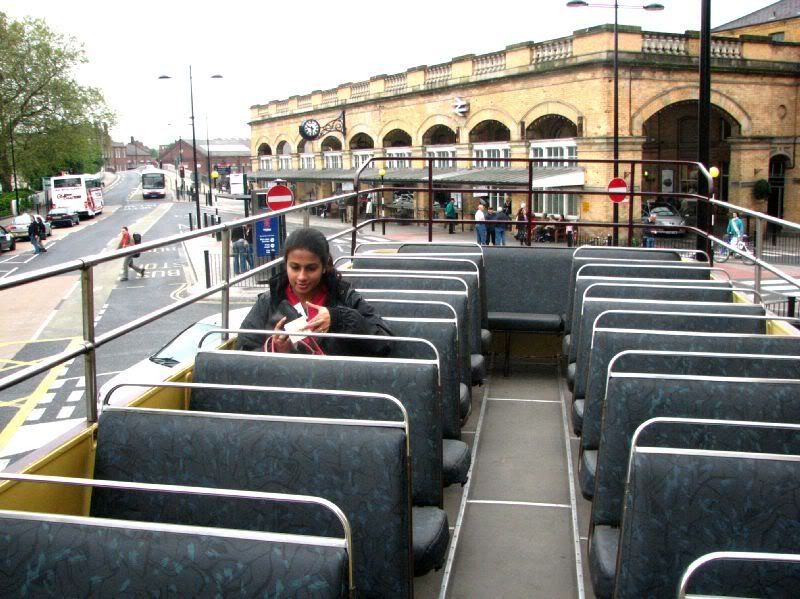 During the 45-minute tour, we drove past various churches, museums, and shopping areas. Only then did we realize just how small the city was. We actually could walk through the entire city, guided by a simple map and the city signs.
During the 45-minute tour, we drove past various churches, museums, and shopping areas. Only then did we realize just how small the city was. We actually could walk through the entire city, guided by a simple map and the city signs. 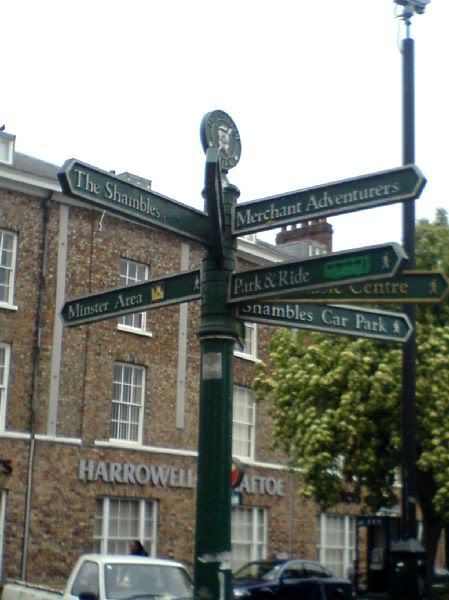 No buses, no taxis, and no tube. We got off at Exhibition Square, to visit York Minster. After walking past Bootham Hall and several quaint little shops (expensive though), we were in the magnificent presence of the Church. Built in the shape of a cross, the church that took over 250 years to build, was exquisite. The stained glass and carved stones had crosses as well, and the architecture was detailed and awe-inspiring.
No buses, no taxis, and no tube. We got off at Exhibition Square, to visit York Minster. After walking past Bootham Hall and several quaint little shops (expensive though), we were in the magnificent presence of the Church. Built in the shape of a cross, the church that took over 250 years to build, was exquisite. The stained glass and carved stones had crosses as well, and the architecture was detailed and awe-inspiring. 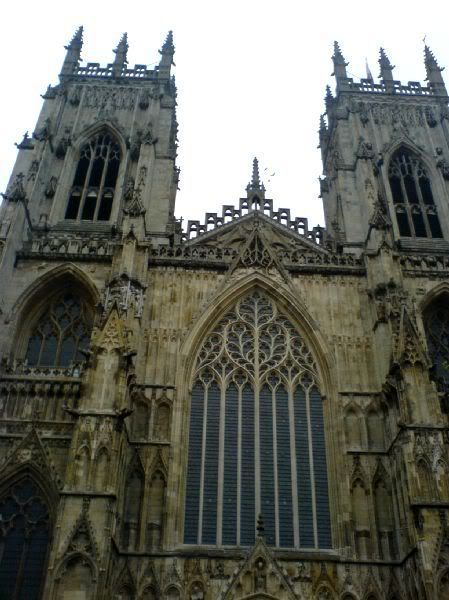





 We didn't go for service that had already began, but walked all around the church. An artist was busy at work outside.
We didn't go for service that had already began, but walked all around the church. An artist was busy at work outside.  After admiring his work, we went into St Micheal Le Belfrey. the older church next to the Minster. There have been Christians in York since the Roman times, and church buildings in this area since the year 627, when Bishop Paulinus baptised Edwin, king of Northumbria. Saxon burials discovered in Petergate prove that St Michael's is of early origin. This church was rebuilt between 1525 and 1537, during Henry VIII's break with Rome. John Forman, the Minster's master mason buit it in the Tudor gothic style with renaissance influence. Much of the stained glass in the church has survived from that era. Interestingly, this is also the church were Guy Fawkes was baptised.
After admiring his work, we went into St Micheal Le Belfrey. the older church next to the Minster. There have been Christians in York since the Roman times, and church buildings in this area since the year 627, when Bishop Paulinus baptised Edwin, king of Northumbria. Saxon burials discovered in Petergate prove that St Michael's is of early origin. This church was rebuilt between 1525 and 1537, during Henry VIII's break with Rome. John Forman, the Minster's master mason buit it in the Tudor gothic style with renaissance influence. Much of the stained glass in the church has survived from that era. Interestingly, this is also the church were Guy Fawkes was baptised. 

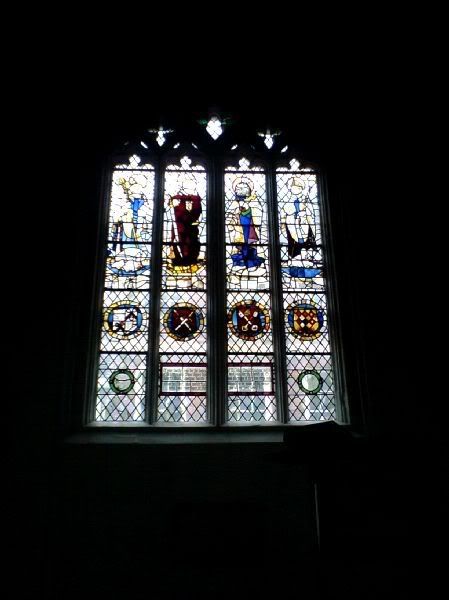 After exploring this church, we walked on further, till we found a grand statue of Constantine.
After exploring this church, we walked on further, till we found a grand statue of Constantine. 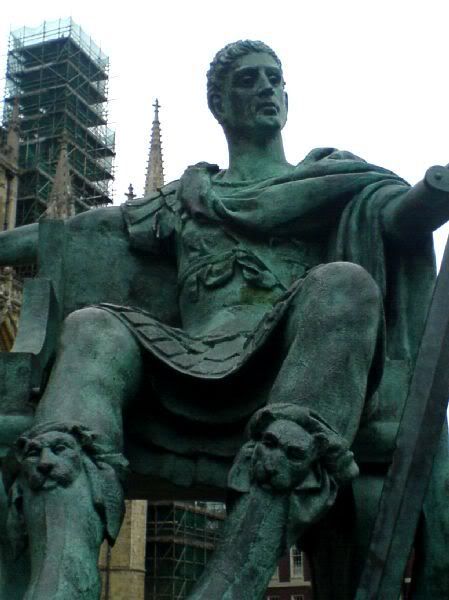 The statue finds place here, because Constantine was proclaimed Roman emperor here. He recognized the faith of his subjects and soon converted to Christianity as well, thereby establishing the foundations of Christianity in the region. From across his status is a tall column.
The statue finds place here, because Constantine was proclaimed Roman emperor here. He recognized the faith of his subjects and soon converted to Christianity as well, thereby establishing the foundations of Christianity in the region. From across his status is a tall column. This Roman column once stood within the great hall of the headquarters building of the fortress of the sixth legion, in the 4th century. It was found in 1969 during the escavation of the south transept of the Minster, lying where it had collapsed.
This Roman column once stood within the great hall of the headquarters building of the fortress of the sixth legion, in the 4th century. It was found in 1969 during the escavation of the south transept of the Minster, lying where it had collapsed. Then we moved into the Minster. Service was on, and the entire church was filled hymns. 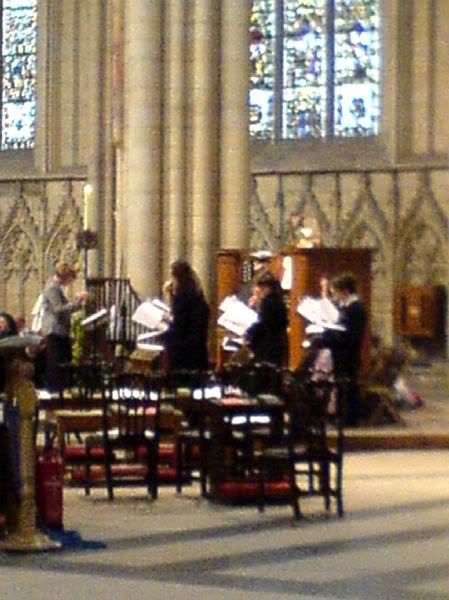
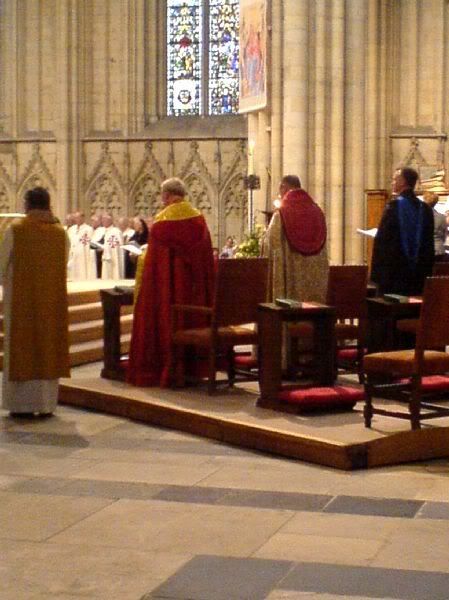

While the choir kept busy, we used our York passes for entry into the undercroft, treasury, and crypt. With the aid of an audio guide, and exhibits from the different ages, we learned the story of the Minster through the ages. We found the remains of the Roman fortress, Viking Norman and medival carvings together with treasures and jewels of archbishops. The crypt is still used for special services, and it is also the final resting place of St William of York. By the time this amazing tour ended, it was time for lunch. We still had a LOT more to explore, and our day had just begun.



While the choir kept busy, we used our York passes for entry into the undercroft, treasury, and crypt. With the aid of an audio guide, and exhibits from the different ages, we learned the story of the Minster through the ages. We found the remains of the Roman fortress, Viking Norman and medival carvings together with treasures and jewels of archbishops. The crypt is still used for special services, and it is also the final resting place of St William of York. By the time this amazing tour ended, it was time for lunch. We still had a LOT more to explore, and our day had just begun.



No comments:
Post a Comment